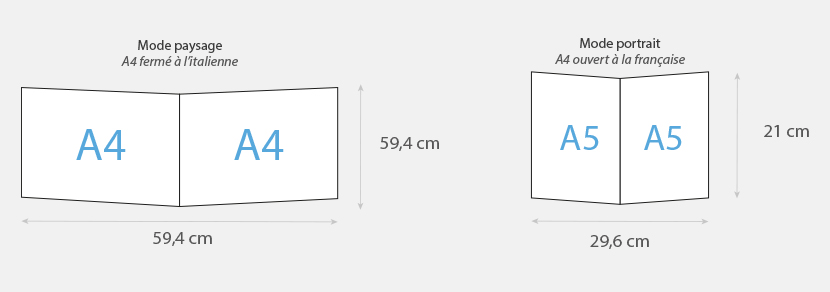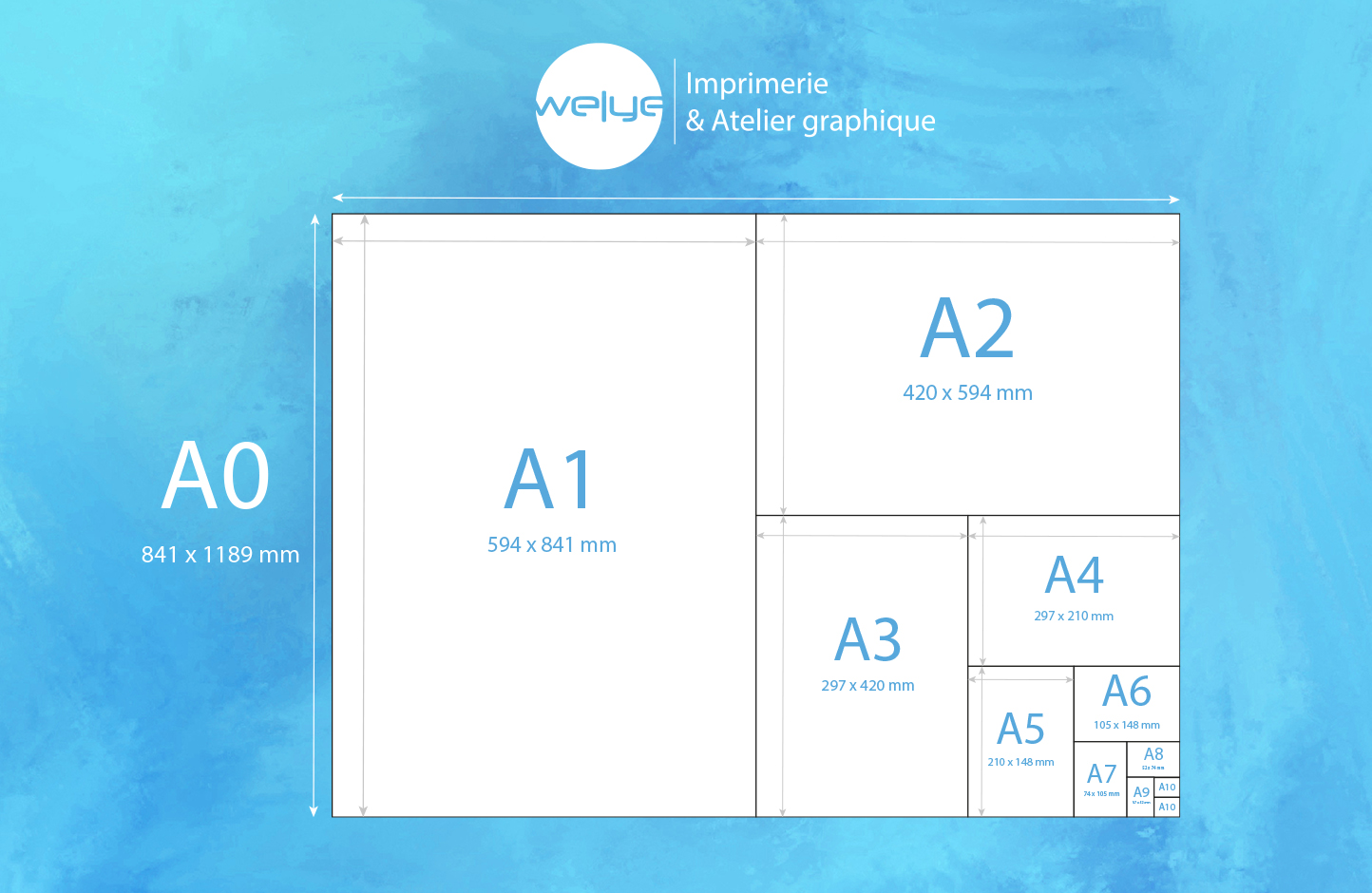The paper we use every day comes in different formats, depending on its intended use.
We’re used to A4 sheets on our standard printer, the A5 format of flyers or notepads, and the A6 format of our postcards.
The ISO 216 standard classifies the different paper formats according to their dimensions, so that all European countries can communicate on the same basis.
In the USA and Canada, the current standard is Letter format; hence the small difference in format between the magazines we find on newsstands in France and those printed in the USA.
The different formats (A series)
So, according to ISO 216, the various formats in the A series are a division of the original A0 format. This same A0 format is thus divided as follows:
| FORMATS | DIMENSIONS IN MM | DIMENSIONS IN CM |
| A0 | 841 x 1189 mm | 84.1 x 118.9 cm |
| A1 | 594 x 841 mm | 59.4 x 84.1 cm |
| A2 | 420 x 594 mm | 42 x 59.4 cm |
| A3 | 297 x 420 mm | 29.7 x 42 cm |
| A4 | 297 x 210 mm | 29.7 x 21 cm |
| A5 | 148 x 210 mm | 14.8 x 21 cm |
| A6 | 105 x 148 mm | 10.5 x 14.8 cm |
| A7 | 74 x 105 mm | 7.4 x 10.5 cm |
| A8 | 52 x 74 mm | 5.2 x 7.4 cm |
| A9 | 37 x 52 mm | 3.7 x 5.2 cm |
There are other series: the B series and the C series. The C series is wider than the A series, and the B series is wider than the C series.
Open and closed formats
When producing brochures, leaflets or folders, we often speak of open and closed formats. The principle is simple: for an A4 brochure or leaflet, we speak of open A3 format, corresponding to two A4s side by side. The open or closed format will also provide additional information when choosing the orientation of the support.
The Italian format corresponds to landscape printing, and the French format to portrait printing.







